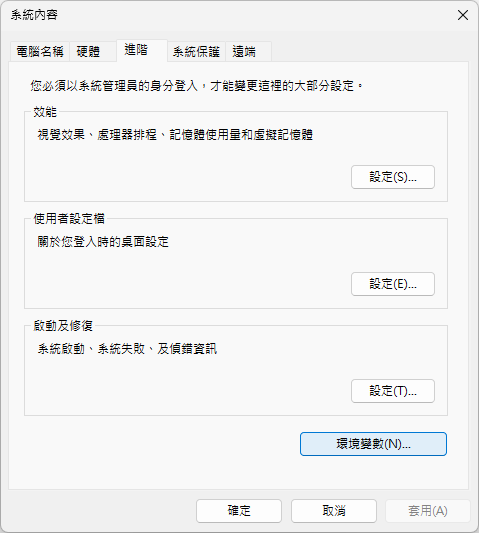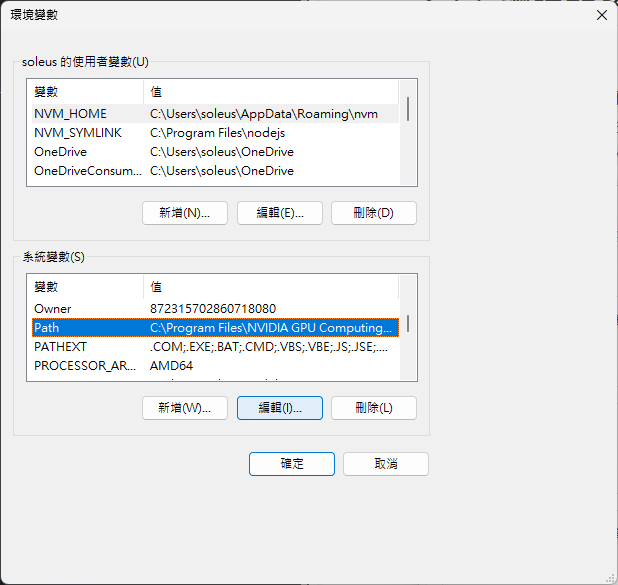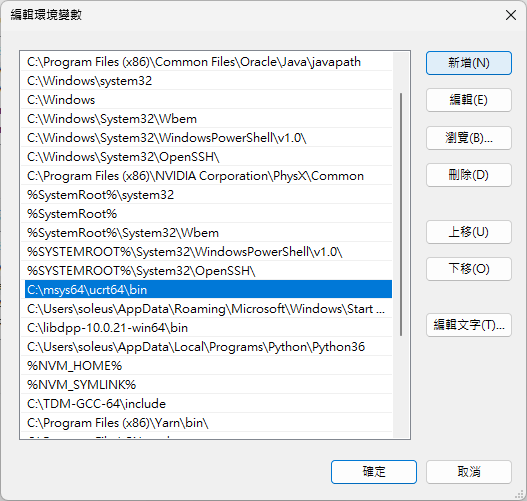暑假資讀[0]
從0開始的異世界生活程式人生
講師

- (1.5)25賴柏宇
- 海之音、Sea_of_Voices、小海或其他類似的
- 美術能力要完蛋了
- 表達能力差,聽不懂請馬上舉手問
- INFOR 36th 學術長
- 學弟加資訊社
Index- C++簡介
- 怎麼寫程式
- Hello, world!
- 變數
- I/O
- 運算子
- 陣列

- 指標/參考
- 條件式
- 迴圈
- 函式 / 遞迴
- 物件
- OJ
- Contests
:你知道電研花了一個半小時的小社就把這堆東西講完了嗎
:那當然 那可是BrineTW我的偶像欸
C++簡介
說真的 我相信你們都比我清楚
從C開始- 一種中階語言
- 組合語言 -> C語言
- 許多高階語言的基礎
- 你可以叫C爸爸
- 編譯型語言
- 運行速度極快
- 物件導向(OOP)
- 強類型、靜態

從C開始機器碼
程式語言發展
組合語言
C
0000 0000 000000010000
0000 0001 000000000001
0001 0001 000000010000
0001 0001 000000000001 section .data
msg db 'Hello, world!',0xA
len equ $-msg
section .text
global _start
_start:
mov edx,len
mov ecx,msg
mov ebx,1
mov eax,4
int 0x80
mov ebx,0
mov eax,1
int 0x80#include<stdio.h>
int main(){
printf("Hello, world\n");
return 0;
}(亂找的 這不是Hello world)
低階 -> 高階
不是給人看 -> 給人看的
所以別再抱怨C/C++很難讀懂了
從C開始C
C
#include<stdio.h>
int main(){
printf("Hello, world\n");
return 0;
}#include<iostream>
int main(){
std::cout << "Hello, world" << std::endl;
return 0;
}C++
Python
print("Hello, world\n")Java
public class HelloWorld {
public static void main(String[] args) {
System.out.println("hello, world!");
}
}從C開始C/C++
C
C++
Python
C/C++的運作
組語
編譯
機器碼
組譯
C++- 加了不少擴充的C
- 基本上是C的向上兼容
- 更加物件導向(OOP)
- 終於不用什麼都自己寫了(淚
- 運行速度和C差不多
- STL我的神

怎麼寫程式
其實這原本應該是807⁸⁰⁷要講但他不在 部分簡報by 807⁸⁰⁷
IDE(整合式開發環境)- 好用、方便、功能多
- 語法凸顯、各種外掛套件
- 文字編輯器、編譯器、除錯器等
- 專案開發常用,常針對特定語言
- (本機) Visual Studio (Microsoft), Code::Blocks, DEV-C++,
- 難裝、吃很多資源




VScode(文字編輯器)
- 打題目時更好用
- 自己裝編譯器
- 各種無敵外掛插件
- 字很好看
- 字很好看,真的
- 提示字用起來很方便,用過回不去其他的

VScode- 搜尋VScode
- 安裝Windows版
- 不要用電教電腦的VScode寫C++,很怪
- 插件裝Code Runner, C++
- 設定裡有很多酷東西,可以自己摸看看
- 在設定裡把Run in terminal勾起來

編譯器(MSYS2)
pacman -S mingw-w64-ucrt-x86_64-gcc編譯器(MSYS2)6. 前往環境變數(可以用左下角的搜尋)
7. 選取 系統變數 中的 Path 然後按下 編輯
8. 按 新增 然後貼上這段路徑
如果有如果有變更路徑: 去資料夾找 你改的路徑+\ucrt\bin
9. 確定 確定 確定
C:\msys2\ucrt64\bin


編譯器(MSYS2)記得重開 VSCODE
編譯器(MSYS2)1. 按 Ctrl+` 開啟終端機
2. 輸入
出現👇代表安裝成功
g++ --versiong++ (Rev10, Built by MSYS2 project) 12.2.0
Copyright (C) 2022 Free Software Foundation, Inc.
This is free software; see the source for copying conditions. There is NO
warranty; not even for MERCHANTABILITY or FITNESS FOR A PARTICULAR PURPOSE.偷偷介紹WSL
其實這原本應該是807不該講但他不在 簡報by807
WSL(Linux子系統)Windows Subsystem for Linux
超好用的東西


WSL(Linux子系統)按Windows+R 輸入 cmd(開啟cmd)
輸入
按Windows+R 輸入 wsl(開啟wsl)
輸入
wsl --installsudo apt upgrade
sudo apt install g++ gdb
code .更新apt
安裝編譯器
開啟vscode
WSL(Linux子系統)安裝好了!
比剛剛快多了
Hello, world!
第一次接觸某程式的傳統
做就對了- 開啟一個新檔案叫hello_world.cpp
- 輸入以下程式
- 按下Ctrl + Alt + N,沒意外的話會顯示hello, world
#include<iostream>
int main(){
std::cout << "hello, world\n";
return 0;
}- 沒帶筆電就乖乖用Code::Blocks吧 或者你可以用Replit

Code::Blocks

VScode
程式架構- 預處理:有#開頭的東西
- 編譯:將預處理完的程式編譯成組語
- 執行:程式的會直接從int main()開始執行,所以等等要寫的東西除非特別註明,都丟在main(){}裡
- 每行程式用分號分開
#include<iostream>
#define io std::ios_base::sync_with_stdio(0), cin.tie(0), cout.tie(0)
/*
可能有其他函式、結構變數
*/
int main(){
io;
std::cout << "hello, world\n";
return 0;
}<-預處理
<-其他函式區
<-主函式區
變數/Variable
Variable: 多變的 那const變數怎麼解釋
變數- 電腦裡的一段記憶體,可用於儲存資料
- C++是靜態型態,強型別,所以宣告任何變數都要講清楚類別(部分情況除外)
- 通常型別不能任意轉換
- int (整數) / unsigned int (無號數,只能存正值)
- long long(長整數) / unsigned long long
- float (浮點數/小數)
- double (倍精度浮點數)
- short / unsigned short
int占4 bytes(32位元) -> 儲存範圍
(一格存正負,剩下存數字),以此類推 unsigned int 存
long long 占 8 bytes,範圍
float占 4 bytes,範圍 3.4E +/- 38 (7 位數)
double占 8 bytes,範圍 1.7E +/- 308 (15位數)
short占 2 bytes,範圍
其他型別- char / unsigned char / signed char 字元
- bool (布林值) (false/true)
- string 字串<- 這東西嚴格說來不算是變數
char是以ASCII編碼,實際字元作用的範圍只有0~127,但可以存-128~127(或0~255)
當整數被轉成bool時,只有0是false,剩下數字都是true,bool轉成整數時預設是0和1
string在C裡面是字元陣列(後面會提),在C++裡我們有現成的string可以用,等等提
宣告與使用變數- 申請空間
- 宣告方式:型別名稱 變數名1, 變數名2;
- 例如 int a, b;
- =:將右值複製存到左邊
- 也可以在宣告時一併賦值,如 int a=5;
- char的賦值要加 ' ',string的賦值要加" "
- char因為本身也是數字,所以要用整數賦值也不是不行,之後會遇到
string- 程式新手最大問題 吧
- 不要和字元搞混,字串是一堆字元串在一起
- 記得加 " " 記得加 " " 記得加 " "
- 使用前先 #include<string> 或 #include<bits/stdc++.h>
- using namespace std;或using std::string;
string- string objectA = "Apple", objectB = "Banana";
- objectA+objectB會是"AppleBanana" (字串加法)
- 如果想要取得 string 的長度,可以把 .size() 放在一個 string 後面
跳脫字元- \ 加上某個字,用在字元或字串裡
- 常用跳脫字元:
- \n 換行,很重要,無限顆星號
- \b backspace(刪除一格)
- \t tab
- \0 空字元(用於c-style string)的結尾
- \\ 反斜線 (跳脫 跳脫字元.jpg)
- \' 單引號 (防止出現 char a = ''';這種詭異情況)
- \" 雙引號 (同上)
作用域- 變數的作用範圍
- 全域變數:宣告在各個函式之外的變數
- 區域變數:宣告在「某組大括號」之內的變數
- 區域變數的作用範圍是宣告底下,到最近的右大括號
- 生命週期:區域變數在程式執行到右大括號時死亡
- 當全域和區域變數撞名時,總是優先使用區域變數
int a = 1; //外層變數
{
int a = 2; //內層變數
}
a = 3;//到這裡{}裡的a就沒有作用了,修改的是外層的那個修飾字- 讓變數具備某些特性
- 宣告:修飾字 變數型態 變數名稱;
- const:常量,不可修改
- static:靜態變數,生命週期一直到程式結束
- extern
I/O
實際上我更愛scanf/printf
輸出- #include <iostream>
- using namespace std;
- cout << 變數1 << 變數2 << 變數3....; 也可以是字串,例如 cout << "hello, world\n" << 變數1;
- 小試身手
- string apple = "banana";
- cout << "apple" << ' ' << apple;
輸入- 從終端機取得值存到變數
- cin >> 變數1 >> 變數2 >> 變數3;
- 輸入以空白字元隔開,包括space,換行等
- 一次取一行:getline(cin, stringName);
- 一次取一個字元:c = getchar();
優點與缺點- 自動判斷變數型別
- 直觀,好寫
- 慢
- 優化:加上
- 犧牲混用性(不能用printf scanf)與在線性換來速度
- <<和>>在大量時超醜
std::ios_base::sync_with_stdio(0), cin.tie(0), cout.tie(0); C-style Output- #include <stdio.h>
- printf(const char*(常量字串), 變數1, 變數2...);
-
%○代表此位置替換成變數內容
- %d: 十進位 int
- %u: unsigned int
- %lld: long long
- %c字元
- %s C-style string
- %f 浮點數
- %e 科學記號浮點數
- %p 指標
int a=3, b=5;
printf("%d %d", a, b);int a=5;
printf("%p", &a);C-style Output- #include <stdio.h>
- scanf(const char*, 變數指標1, 變數指標2...);
- %與printf同理
- 格式化輸入輸出好用
- 壓常可以用,雖然top coder都用快讀快寫
int hr, min;
scanf("%d:%d", &hr, &min);int a, b;
scanf("%2d%2d", &a, &b);#include <iostream>
int main(){
int a, b;
cin >> a >> b;
cout << a << ' ' << b << '\n';
return 0;
}#include <stdio.h>
int main(){
int a, b;
scanf("%d%d", &a, &b);
printf("%d %d", a, b);
return 0;
}EOF- 有時題目會要求吃到檔案結尾(end of file, eof)就結束輸入
- while(cin >> a)
- if(cin.eof()) break;
- while(scanf("%d", &a) != EOF)
運算子(operator)
畢竟電腦是電子計算機,會運算是很正常的
運算子- 利用變數做計算的方式
- 善用()提高可讀性,也可以減少錯誤
- 一般運算
- +加
- -減
- *乘
- /除
- %取餘數
- 位元運算
- >>右移
- <<左移
- ~補數(一元)
- &bit and
- | bit or
- ^ bit xor
- 邏輯/比較運算(回傳布林)
- >大於
- >=大於等於
- <小於
- <=小於等於
- ==等於
- !=不等於
- &&邏輯且
- ||邏輯或
- !非(一元)
運算子- ++/--
- 放在變數前面:變數+1/-1然後再進行運算
- 放在變數後面:先進行運算再+1/-1
- +=, -=, *=, /=, %=, >>=, <<=, &=, |=, ^=
- a X= b; 等價於 a = a X b;
優先順序:先乘除後加減,然後是位元運算和邏輯運算
不確定時括號是你的超人
陣列
用Vector啦
一維陣列- 一連串相同型態的變數,在電腦中是一段連續的記憶體
- 同一型態變數 輸入量不固定/大量 時使用
- 宣告:變數型態 陣列名稱[陣列大小];
- 初始化:使用大括號包起來,逗號分開元素
- 全域陣列的大小只能是常數
一維陣列- 取値:利用 陣列名稱[索引值] 存取單一格元素
- 索引值是從0開始到陣列大小-1,別耍笨(重要)
- int a[5]; a[0] = 48763; cout << a[0]; //48763

高維陣列- 如果剛剛的一維陣列是一條數線,二維陣列就是笛卡兒平面,以此類推
- n維陣列是n-1維陣列的陣列
data[0]
data[1]
data[2]
data[3]
data[4]
一維陣列data[5]
data[0][0]
data[1][0]
data[2][0]
data[3][0]
data[4][0]
data[0][1]
data[1][1]
data[2][1]
data[3][1]
data[4][1]
data[0][2]
data[1][2]
data[2][2]
data[3][2]
data[4][2]
二維陣列data[5][3]
高維陣列- 抽象化後只要把高維陣列當成有多個索引值供查詢的資料容器就好
- 使用方式和一維陣列幾乎相同
- 宣告
- 變數型態 陣列名稱[第一維大小][第二維大小]...;
- int data[5][3][2];就是宣告一個大小為5*3*2的三維陣列
(C-style)string- 字元陣列,以空字元結尾
- char a[] = "apple"; 實際大小是6
- { 'a', 'p', 'p', 'l', 'e', '\0' }
- 因為是陣列,可以用[]取特定位置的字元
- C++的string也可以用[]取
指標(和參考)
老實說指標沒很常用 我都用參考
指標(pointer)- 一種變數,儲存記憶體的位置
- 也可指稱某記憶體位置
- 可以拿來申請空間
- 占 8 byte ,同 long long
- 直接看code
指標(pointer)- 宣告:變數型別 *變數1, *變數2...;
- 取一個變數的位址:&變數
- 存取某位址的內容:*指標
- 宣告新指標(申請空間):new 變數型態;
#include<iostream>
using namespace std;
int main(){
int *a = new int;
cout << a << '\n'; //0xbe1560
int b = 5;
int *c = &b;
cout << c << ' ' << *c; //0x70fdfc 5
return 0;
}指標(pointer)- 空指標:nullptr
- 刪除變數(釋放空間):delete 指標;
- 陣列本身也是指標
- data[index] 相當於 *(data+index)
data[0]
data[1]
data[2]
data[3]
data[4]
類似變數存取
data
data+1
data+2
data+3
data+4
指標
&data[0]
&data[1]
&data[2]
&data[3]
&data[4]
相當於
指標(pointer)- 高維陣列:指向指標的指標
#include<iostream>
using namespace std;
int main(){
int data[5][5];
for(int i=0;i<5;i++){
for(int j=0;j<5;j++){
data[i][j]=i*5+j;
}
}
/*
{
{ 0, 1, 2, 3, 4},
{ 5, 6, 7, 8, 9},
{10, 11, 12, 13, 14},
{15, 16, 17, 18, 19},
{20, 21, 22, 23, 24}
}
*/
cout << *(*(data+2)+3); //13
return 0;
}
指標(pointer)- 高維陣列:指向指標的指標
- 註:取址/取值運算子優先順序高於五則運算
*data
| *(*(data+1)) : 5 | *(*(data+1)+1):6 | *(*(data+1)+2):7 | *(*(data+1)+3):8 | *(*(data+1)+4):9 |
|---|
*(data+1)
| *(*data) : 0 | *((*data)+1) : 1 | *((*data)+2) : 2 | *((*data)+3) : 3 | *((*data)+3) : 4 |
|---|
...
參考(reference)- 變數的別名
- 直接看code
#include <iostream>
using namespace std;
int main() {
int a = 5;
int &b = a;
b = 1;
cout << a; //1
return 0;
}- 修改b(參考)時也會修改到a(變數)
參考(reference)- 加上 cout << &a << ' ' << &b; 確認
- output: 0xf6b7ffd24 0xf6b7ffd24
- 共用相同記憶體!
- 宣告: 變數型態 &參考名 = 變數;
- 注意必須有初始值
- 一旦宣告,指稱的對象就不能被修改
- C++專有語法,C裡沒有
- 底層應該是用pointer實作的
條件式
if - else 應該不會有人特別去用 switch - case 啦
if-else- 流程圖 & 語法
- contition: bool

// do something
if(condition){
// do something if true
}
else{
// do something if false
}
// do something- else可無
if-else- 多層條件和多個結果
- 巢狀結構和else if
// ...
if(condition1){
//...
}
else{
if(condition2){
// ...
}
else{
// ...
}
}
// ...// ...
if(condition1){
// ...
}
else if(condition2){
// ...
}
else{
// ...
}
// ...三元運算子- 條件?成立時回傳值:不成立時回傳值
- 後兩者的型態必須相同
- 將a的絕對值存到b
- 速度比if - else快一些
b=a>0?a:(-a);迴圈(loops)

while loops- 做重複或類似的的事情
- 持續條件很重要
- 輸入到EOF的運作原理

// ...
while(condition){
// ...
}
// ...// ...
while(cin >> n){
// ...
}
// ...for loops- 和while類似,只是把初始化、持續條件、常駐步驟寫在一起(三個都可以選擇不填)
// ...
for(初始化; 持續條件; 常駐步驟){
// ...
}
// ...- 固定執行n次
// ...
for(int i=0; i<n; i++){
// ...
}
// ...無窮迴圈- 不終止的迴圈,條件永遠都是true
while(true){
// ...
}- 如何跳出這種迴圈?
break, continue- 中斷迴圈
- break:直接跳出迴圈外
- continue:強制回到迴圈頭(執行判斷等)
//範例:如果輸入=0就跳出
int n;
while(true){
cin >> n;
if(n==0) break;
// ...
}
//也可以寫成
int n;
while(cin >> n && n!=0){
// ...
}//範例:輸出輸入的數字
//除非輸入=48763則跳過
int n;
while(true){
cin >> n;
if(n==48763) continue;
cout << n << '\n';
// ...
}多層迴圈- 在迴圈裡跑迴圈
- 怎麼跳出多層迴圈?
#include<iostream>
using namespace std;
int main(){
int data[5][5];
for(int i=0;i<5;i++){
for(int j=0;j<5;j++){
data[i][j]=i*5+j;
}
}
/*
{
{ 0, 1, 2, 3, 4},
{ 5, 6, 7, 8, 9},
{10, 11, 12, 13, 14},
{15, 16, 17, 18, 19},
{20, 21, 22, 23, 24}
}
*/
cout << *(*(data+2)+3); //13
return 0;
}
重新看一次這份code,應該要能知道為什麼結果是這樣
do while- 很少用到
- 先做一次再判斷條件
do{
// ...
} while(condition);遍歷陣列(C++11以上)- 好用
- 可搭配auto讓編譯器自動判斷型別
int a[]={0, 1, 2, 3, 4};
for(int i:a) i=0;
for(int i:a) cout << i << ' '; // 0, 1, 2, 3, 4將陣列內的值分別複製到 i 中,然後跑過a陣列
注意如果是在多維陣列裡,因為陣列就是指標,所以如果修改低維的內容還是會改到值
int a[]={0, 1, 2, 3, 4};
for(int& i:a) i=0;
for(int i:a) cout << i << ' '; // 0, 0, 0, 0, 0i 的參考分別指向 i[0], i[1]..., i[4]
TIOJ 1007 參考解答
#include <iostream>
#define int unsigned long long
using namespace std;
signed main() {
int n, m;
cin >> n >> m;
int dp[n + 1];
for (int i = 0; i <= n; i++) dp[i] = 0;
dp[0] = 1;
dp[1] = 1;
int temp;
for (int l = 1; l < m; l++) {
temp = dp[0];
for (int j = 1; j <= n; j++) dp[0] += dp[j];
for (int j = n; j >= 2; j--) dp[j] = dp[j - 1];
dp[1] = temp;
}
int ans = 0;
for (int i = 0; i <= n; i++) ans += dp[i];
cout << ans;
return 0;
}逆向 ZJ b515 參考解答
//字串預處理
#include <iostream>
#include <string>
using namespace std;
int main() {
string temp;
for (auto &i : "A .- B -... C -.-. D -.. E . F ..-. G --. H ....I .. J .--- K -.- L .-..M -- N -. O --- P .--.Q --.- R .-. S ... T -U ..- V ...- W .-- X -..-Y -.-- Z --..") {
if (i == ' ') continue;
if ('A' <= i && i <= 'Z') cout << "\"" << temp << "\", \n", temp = "";
else temp += i;
}
return 0;
}#include <iostream>
#include <string>
using namespace std;
int main() {
const string table[26] = {
".-",
"-...",
"-.-.",
"-..",
".",
"..-.",
"--.",
"....",
"..",
".---",
"-.-",
".-..",
"--",
"-.",
"---",
".--.",
"--.-",
".-.",
"...",
"-",
"..-",
"...-",
".--",
"-..-",
"-.--"};
string input;
cin >> input;
string ans;
for (unsigned int i = 0; i < input.size(); i++) {
ans += table[input[i] - 'A'];
}
cout << ans;
return 0;
}函式(function)
還有基礎遞迴(recursion)
函式- 鍵盤上的Fn鍵
- 將一堆動作包在一起
- 類似數學的函數,可以有傳入值、回傳值
- 動作類似但不像迴圈那麼規律時可用

函式
參數(可無)
回傳值(可無)
函式:處理過程
定義函式- 如同變數,使用前要先「宣告」
- 宣告完後定義這個函式要做什麼
- 定義:「規範動作」、「規範處理過程」
- 一般來說宣告完直接定義就行
- 寫在主函式外面,函式裡面不能宣告/定義其他函式
// 宣告+定義
回傳型別 函式名稱(參數型別1 參數1, 參數型別2 參數2...){
定義內容
}
// 只有宣告
回傳型別 函式名稱(參數型別1 參數1, 參數型別2 參數2...);呼叫函式- 直接用 函式名稱(參數1, 參數2...) 呼叫就行
- 拿 std 內建的 min 函式舉例
- int a = min(5, 4);
參數- 不一定要有參數
- 參數是小括號內的內容,以逗號隔開
- 參數會從傳入的地方複製一份資料,如果不用參考的話
- 如果要修改原本地方的資料就記得加參考
- 如果傳入資料量很大也記得加參考(也可以用常量參考)
回傳值- 函式在計算完某東西後經常會回傳某值(像是 sin(x) 會回傳 x 的正弦值)
- 同一個函式裡的回傳值必須是同一型別
- 使用 return 回傳, return 同時函式也會終止
- 不回傳的話型別設成 void ,一樣可以用 return 終止函式
練習:寫一個函式交換 main() 函式裡兩個整數變數的值
參考解答
#include<iostream>
using std::cout;
void swap(int &a, int &b){
int temp=a;
a=b;
b=temp;
return;
}
int main() {
int a = 5, b = 3;
swap(a, b);
cout << a << ' ' << b; // 3 5
return 0;
}遞迴(recursion)- 函式的定義用到自己
- 費波那契數列
- 遞迴三步驟:
- 設定「初始狀態」
- 找出「如何轉移」
- 思考「何時終止」

遞迴(recursion)費波那契數列(遞迴Ver.)
int fibonacci(int n) {
if (n == 1 || n == 2) return 1;
return fibonacci(n - 1) + fibonacci(n - 2);
}初始狀態:f(1) = f(2) = 1
狀態轉移:f(n) = f(n-1) + f(n-2)
終止時間:n = 1 或 n = 2
練習:利用 求 ,並分析此函式應該會被呼叫幾次(以 n 表示)
再分析如果利用 會被呼叫多少次
你能夠想到的最好作法是什麼?(呼叫次數最少?)
改成 呢?
進階題:求上面求費波那契數列的方法會呼叫多少次函式?(數學)

結構變數/物件
一點點OOP
物件導向(OOP)淺談- Object-oriented programming, OOP
- 將一堆變數包在一起定義一個類別(class)
- 物件(object):類別的實現
- 屬性(Attributes):類別包含的變數
- 方法(method):對屬性的操作
- 物件當變數用
- 不管背後怎麼實作
- 與FP(Functional Programming)相對
- 封裝、繼承、多型
結構變數(struct)#include <iostream>
using namespace std;
struct person {
double height, weight;
double BMI() {
return weight / (height * height);
}
};
int main() {
person Sea;
Sea.height = 1.813;
Sea.weight = 71.4;
cout << Sea.BMI(); // 21.7221
}- 宣告:struct 結構名{ // ... }; 記得分號
- 使用 '.' 取得物件的屬性(如果是物件的指標用 "->")
結構變數(struct)struct person {
double height, weight;
double BMI();
};
double person::BMI(){
return person::weight/(person::height*person::height);
}- 使用"::"取得類別屬性
struct person {
double height, weight;
struct other{
double length_of_hair;
string favorate_food;
} other_information;
};- 可以在struct裡開struct
結構變數(struct)- 注意結尾要加分號
- 在 struct 裡面取屬性不用特別多加什麼
- 在 struct 裡面不能宣告與自己相同的 struct (循環定義),但可以宣告自己類型的指標
- 屬性可以有預設值
- 宣告結構變數時同時做一些事,例如初始化
- 寫在結構裡時:
- 結構名(參數型別1 參數1, ...){ // ... };
- 之後宣告就用 結構名 結構變數名(參數1...);
struct complex{
int a, b;
complex(int _a, int _b){
a=_a;
b=_b;
}
};
int main(){
complex number(125, 807);
cout << number.a << ' ' << number.b; // 125 807
return 0;
}- 重新定義運算子,讓結構變數照你想要的樣子用
struct complex {
int a, b;
complex(int _a, int _b) {
a = _a;
b = _b;
}
complex operator+(complex another) {
return {a + another.a, b + another.b};
}
};
int main() {
complex number1(125, 807), number2(123, 456);
complex sum = number1 + number2;
cout << sum.a << ' ' << sum.b;
return 0;
}ZJ a271 (可以用struct實作一隻兔子)
OJ
(Online Judge)
寫題目的地方
What is OJ- 有題目讓你寫的地方
- 有些有比賽
- 自動測正確性
一些OJ- TIOJ (Temporary INFOR Online Judge)
- 資訊社的OJ
- 很多競賽題
- 題目難
- 好題多
- 沒有難度分類
- 有校內資訊培訓講義

一些OJ- Codeforces(CF)
- 俄國網站
- 全球最大OJ
- 英文
- 積分系統
- 很多比賽

一些OJ- CSES
- 練習演算法用
- 時限算鬆,題目很裸,一題可練多種演算法
- 練基礎300題
- 照演算法分類

一些OJ- AtCoder(AC)
- 日本網站
- 很多競賽
- 積分系統
- 作息比CF好點

一些OJ- ojdl(OJ的啦)
- 資讀OJ
- 魔鏡用
一些OJ- ZeroJudge(ZJ)
- 全臺最多人用OJ
- 評測系統很糟
- 爛題不少
- APCS考古題
- 照競賽分類

一些OJ- ISCOJ
- 電研的OJ
- 怪題&哏
- 還807一個人情
- 基礎演算法
- 不要去炸這網站 不然807會宰了我
Contests
其他人分享吧